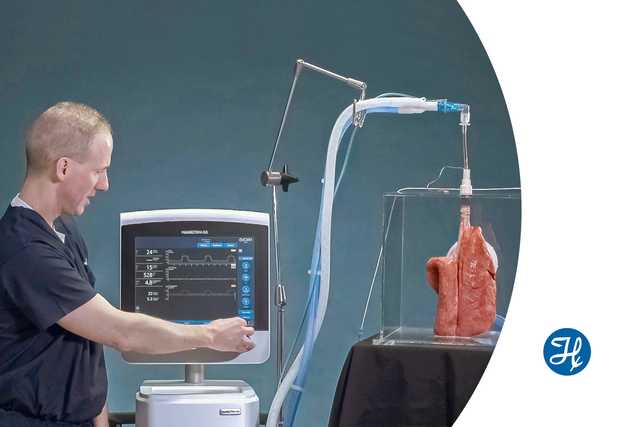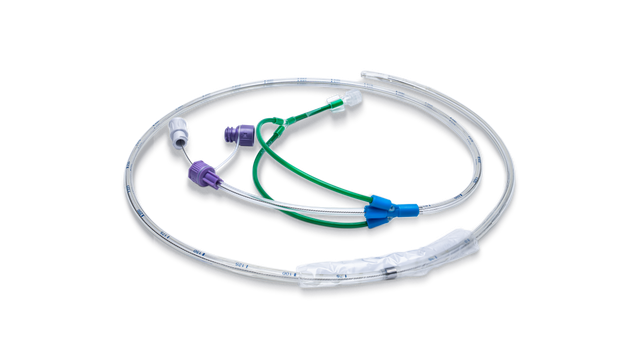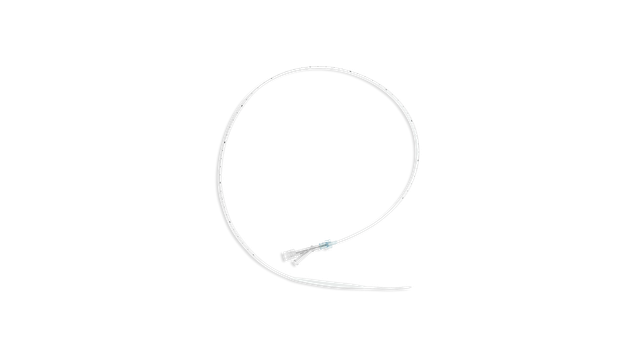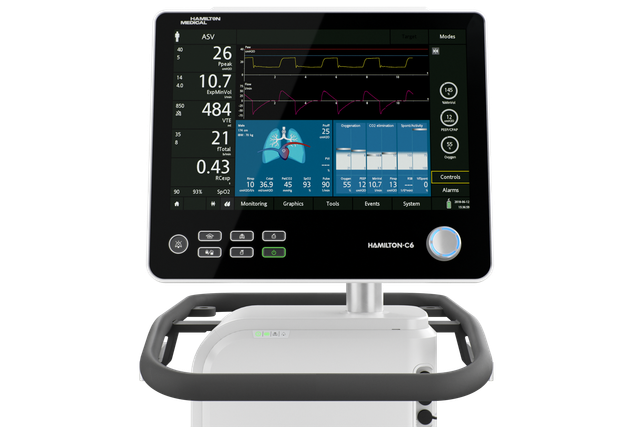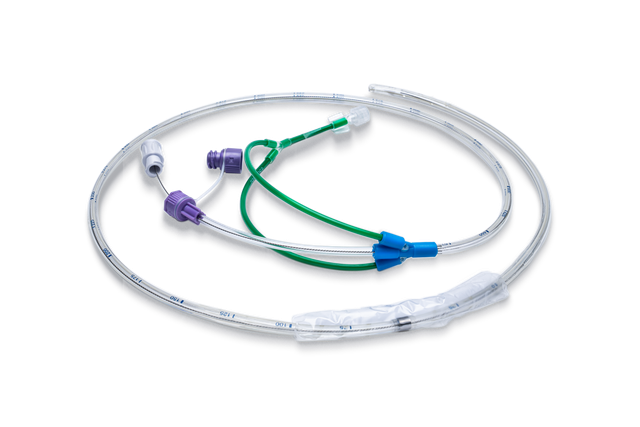
Raccolta dati dall'interno: Misurazione della pressione esofagea
La misurazione della pressione esofagea (Pes) è un metodo di monitoraggio mininvasivo che consente di determinare la pressione transpolmonare.
Il modo più comune di misurare la Pes è utilizzare un palloncino pieno d'aria integrato in un catetere esofageo.
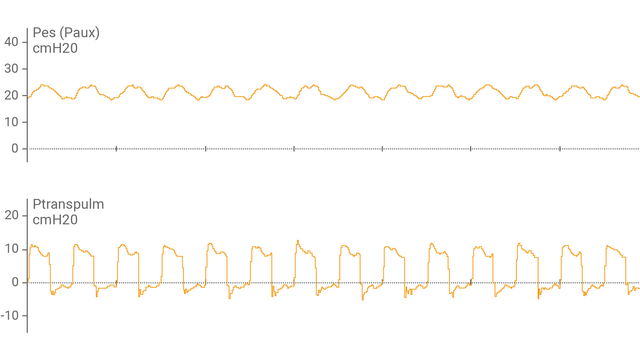
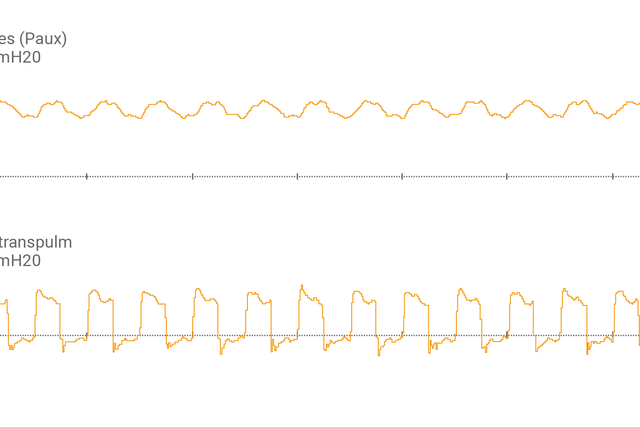
Un confronto da vedere con i propri occhi: Pes e Ptranspulm sullo schermo
Dopo aver collegato il catetere a palloncino esofageo alla porta ausiliaria e aver verificato che sia posizionato correttamente, è possibile vedere sul display del ventilatore le curve di pressione esofagea (Pes) e pressione transpolmonare (Ptranspulm).
È possibile misurare la Ptranspulm statica utilizzando le manovre di pausa inspiratoria/espiratoria.
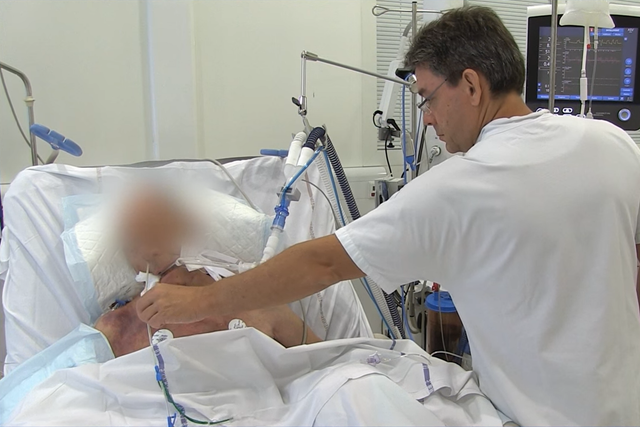
Unire le forze... per valutare la reclutabilità polmonare
Per valutare la possibilità di reclutamento polmonare ed eseguire eventuali manovre di reclutamento, si può anche usare la pressione transpolmonare in combinazione con P/V Tool® Pro.
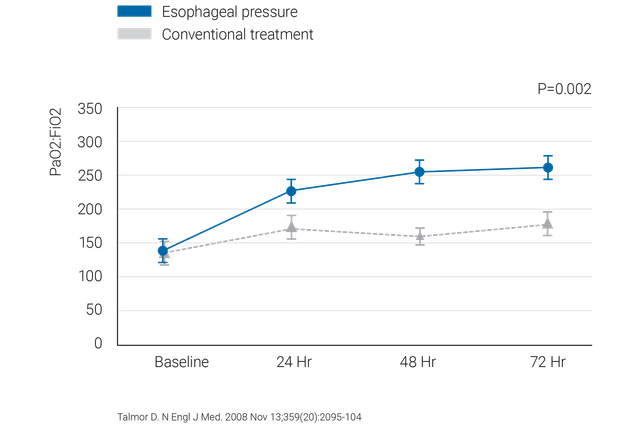
Quali sono i vantaggi? Uno sguardo alle prove
- Regolando la PEEP sulla base della pressione transpolmonare ha permesso di migliorare compliance e ossigenazione nei pazienti con ARDS (
Talmor D, Sarge T, Malhotra A, et al. Mechanical ventilation guided by esophageal pressure in acute lung injury. N Engl J Med. 2008;359(20):2095‑2104. doi:10.1056/NEJMoa07086381 ). - Il target di pressione transpolmonare positiva ha migliorato elastanza e driving pressure; può inoltre essere associato con un miglioramento dei dati di mortalità a 28 giorni (
Baedorf Kassis E, Loring SH, Talmor D. Mortality and pulmonary mechanics in relation to respiratory system and transpulmonary driving pressures in ARDS. Intensive Care Med. 2016;42(8):1206‑1213. doi:10.1007/s00134‑016‑4403‑72 ). - Il monitoraggio della pressione transpolmonare può evitare il ricorso all'ossigenazione extracorporea (ECMO) nei casi più gravi (
Grasso S, Terragni P, Birocco A, et al. ECMO criteria for influenza A (H1N1)‑associated ARDS: role of transpulmonary pressure. Intensive Care Med. 2012;38(3):395‑403. doi:10.1007/s00134‑012‑2490‑73 ). - Una strategia di ventilazione guidata dalla pressione transpolmonare può aumentare la frazione di pazienti con ARDS grave che completa lo svezzamento dalla ECMO (
Wang R, Sun B, Li X, et al. Mechanical Ventilation Strategy Guided by Transpulmonary Pressure in Severe Acute Respiratory Distress Syndrome Treated With Venovenous Extracorporeal Membrane Oxygenation. Crit Care Med. 2020;48(9):1280‑1288. doi:10.1097/CCM.00000000000044454 ). - La misurazione della Pes è la tecnica migliore per valutare lo sforzo e il lavoro respiratori (
Bertoni M, Spadaro S, Goligher EC. Monitoring Patient Respiratory Effort During Mechanical Ventilation: Lung and Diaphragm‑Protective Ventilation. Crit Care. 2020;24(1):106. Pubblicato il 24 marzo 2020. doi:10.1186/s13054‑020‑2777‑y5 ).

Buono a sapersi! Risorse per la formazione sulla pressione transpolmonare
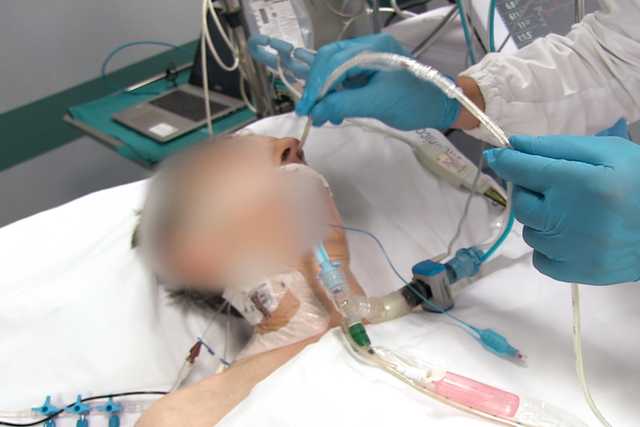
È tutta questione di tecnica: posizionamento di un catetere a palloncino esofageo
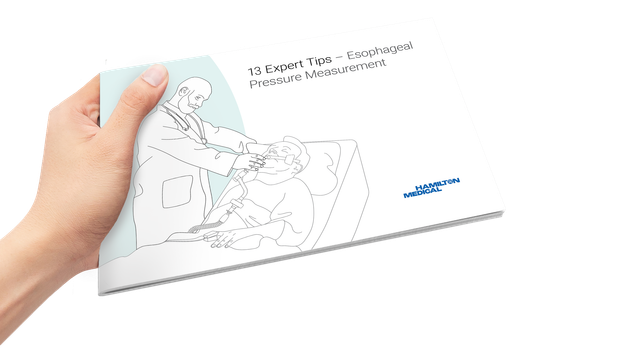
E‑book gratuito
13 consigli dagli esperti Misurazione della pressione esofagea
Raccomandazioni comprovate in ambiente clinico su cosa fare e non fare quando si utilizza la pressione esofagea nei pazienti con ARDS.
Prodotti di consumo
Mettiamo a disposizione i cateteri a palloncino esofagei CooperSurgical e i cateteri naso‑gastrici NutriVent.
Disponibilità
Il monitoraggio della pressione transpolmonare è una funzionalità standard sui ventilatori HAMILTON‑C6 e HAMILTON‑G5/S1.
Per ulteriori informazioni
Transpulmonary pressure measurement bibliography
Transpulmonary pressure measurement whitepaper
Esophageal balloon catheter reference card
Advanced procedure esophageal balloon catheter reference card
Impostazione della PEEP in base al monitoraggio della pressione transpolmonare
Bibliografia
- 1. Talmor D, Sarge T, Malhotra A, et al. Mechanical ventilation guided by esophageal pressure in acute lung injury. N Engl J Med. 2008;359(20):2095‑2104. doi:10.1056/NEJMoa0708638
- 2. Baedorf Kassis E, Loring SH, Talmor D. Mortality and pulmonary mechanics in relation to respiratory system and transpulmonary driving pressures in ARDS. Intensive Care Med. 2016;42(8):1206‑1213. doi:10.1007/s00134‑016‑4403‑7
- 3. Grasso S, Terragni P, Birocco A, et al. ECMO criteria for influenza A (H1N1)‑associated ARDS: role of transpulmonary pressure. Intensive Care Med. 2012;38(3):395‑403. doi:10.1007/s00134‑012‑2490‑7
- 4. Wang R, Sun B, Li X, et al. Mechanical Ventilation Strategy Guided by Transpulmonary Pressure in Severe Acute Respiratory Distress Syndrome Treated With Venovenous Extracorporeal Membrane Oxygenation. Crit Care Med. 2020;48(9):1280‑1288. doi:10.1097/CCM.0000000000004445
- 5. Bertoni M, Spadaro S, Goligher EC. Monitoring Patient Respiratory Effort During Mechanical Ventilation: Lung and Diaphragm‑Protective Ventilation. Crit Care. 2020;24(1):106. Published 2020 Mar 24. doi:10.1186/s13054‑020‑2777‑y


